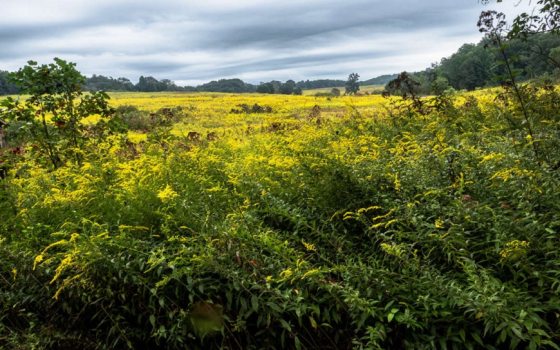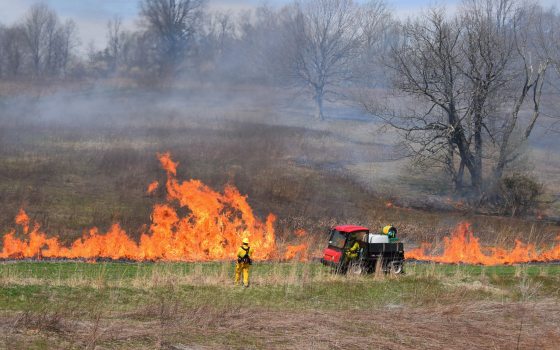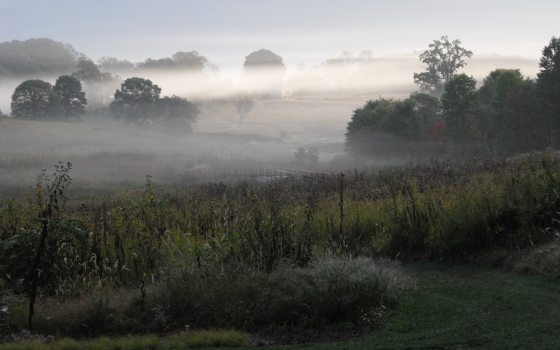There’s something timeless in the way sunlight on morning dew makes the shimmering grasses of a meadow shine. Goldfinches and field sparrows hunt for their breakfast among open flowers and ripe seeds as they have done for millennia, relying on plants that have nourished them since long before any person noticed or named them. But a meadow is also a moment in time, like the shape of a cloud or cherry blossoms in the spring. A meadow is ephemeral.
The seeds in a meadow’s soils contain an array of possibilities: grasses short and tall, delicate ladies’ tresses orchids, elderberry and red-osier dogwoods, sassafras and oak trees. They arrive by many routes. Some come by air: winged maple seeds twirl down from above, while light fluffy milkweed and goldenrod seeds are carried along on a breeze. Animals bring others: blackberry and raspberry seeds travel unharmed inside a bird’s belly to be deposited beneath a perch, while hooked seeds of enchanter’s nightshade stick to animal fur (and people’s socks and shoelaces), to be removed by teeth or hands in a new location. Jewelweed seeds burst from their pods in an explosive pop, while seedbox scatters its tiny seeds like a pepper shaker when the wind blows. All new plants begin small, relying on the nutritious food provided by their parent inside their seed as they put out one or two small leaves.
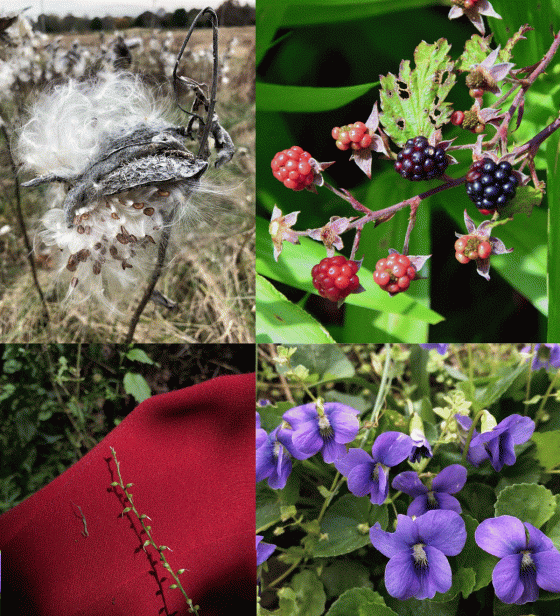
Jewelweed (Impatiens pallida) seeds burst from their pods in an explosive pop. Video by Lea Johnson.
A newly germinated tree is no larger than its seedling neighbors, but soon a sapling will surpass all the grasses and wildflowers around it as it shoots upward. When mature, a tree’s majestic height and broad reach cast a deep and cooling shade. Trees are “ecosystem engineers”—their very existence changes life for others. Plants that thrive in a meadow thrive on bright, all-day sunlight, and as trees grow, they gather that light in their canopies. In the shade below, meadow plants are replaced by forest plants that tolerate the shade of trees. A meadow, left alone, slowly becomes a forest.
This transformation has taken place again and again across the eastern United States as waves of societal changes have swept one after another across the landscape. Forests once cleared for crops, hay fields, and pastures have gradually grown into forests once again, or have been changed into houses, yards, roads, and businesses. To have and to keep a meadow requires effort. It requires making space. And it requires making a mess.
Meadows thrive on ecological disturbance—events that dramatically change the space and resources plants need to grow. Meadows are found—for a time—in places where something drastic has happened. Large storms knock trees down, making gaps in forest canopies. Disease kills patches of trees. Fires clear areas large and small. A change in a river’s course lays bare rich silt. Without human intervention, meadows are found mostly in these disturbed places, and in spots that are too often frozen, too often flooded, or with soils too strange for trees to grow in, like fresh and salt-water marshes, high alpine slopes, and serpentine barrens. If we want to maintain and renew a meadow, we need to act like a small natural disaster. In Longwood’s meadows, we provide renewing disturbance in two ways: mowing and fire.
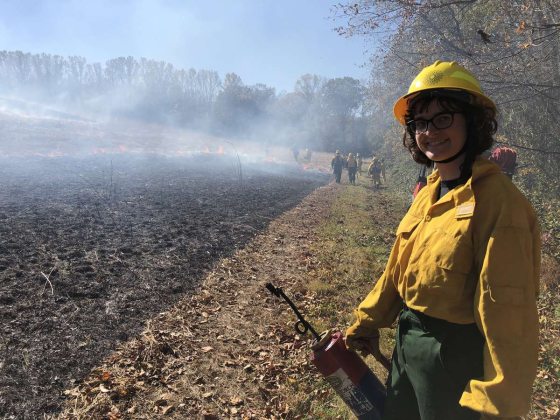
The quick-growing herbs and grasses of a meadow can generally tolerate losing some leaves. Grasses are notoriously good at this, as you can see in any mowed lawn. Many of our native species also tolerate fire, and perennial herbs that store resources below ground are able to quickly send up new shoots. Few trees, however, will grow after being mowed or burned. While these disturbances look shocking at first, a flurry of re-sprouting and new seedlings soon follows. Disturbance makes room for seeds of new plants to germinate in open soil and with more light, helping to maintain diversity. Sometimes we also add new seeds, to add to the richness of the meadow’s species mix or to add more food and nectar resources for pollinators, birds, and other wildlife.
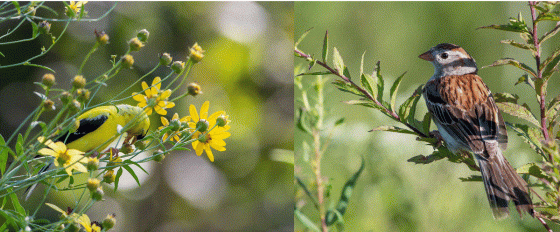
One plot twist in the story of a meadow is that many meadow plants share life-history strategies with the plants not-so-lovingly known as “weeds”. They, too, thrive on disturbance, and the weeds most of us know best grow where human-created ecological disturbances make space for them, like mowed lawns and tilled soil. In his 1965 description of “the ideal weed”, H.G. Baker noted that such plants germinate in a variety of conditions, have long-lived seeds, and grow rapidly as seedlings. Once established they flower quickly, produce many seeds as long into the season as conditions will allow. They aren’t picky about whose pollen fertilizes their flowers—their own pollen is just fine, and they’re often pollinated by generalist pollinators like bees, or by the wind. If they’re perennial, they put up vigorous shoots and can often regenerate from small pieces of root if the rest of the plant is destroyed. They may also have special competitive abilities, like forming rosettes and rapid growth. Many of these characteristics are also advantageous to native plants in meadows, where competition among many small plants can be fierce, and seeds may need to travel far and wait a long time for the next disturbance.
So along with our native meadow plants, we find weeds, and so maintaining a meadow with an abundance of biodiversity and resources for wildlife requires watching what emerges after a renewing disturbance. At Longwood we use the full array of a gardener’s tools to remove introduced species that can and do take over large areas, like multiflora rose (Rosa multiflora), oriental bittersweet (Celastrus orbiculatus), mile-a-minute vine (Persicaria perfoliata), mugwort (Artemisia vulgaris), and Canada thistle (Cirsium arvense, actually from Europe).
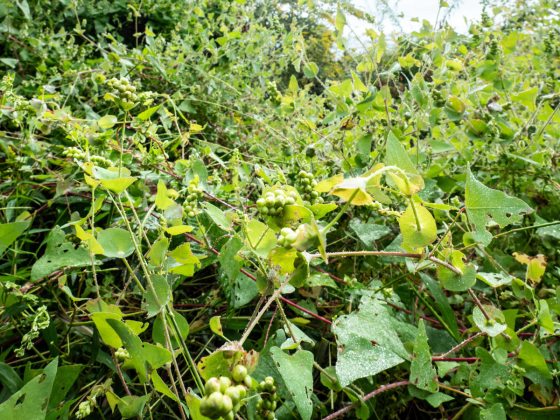
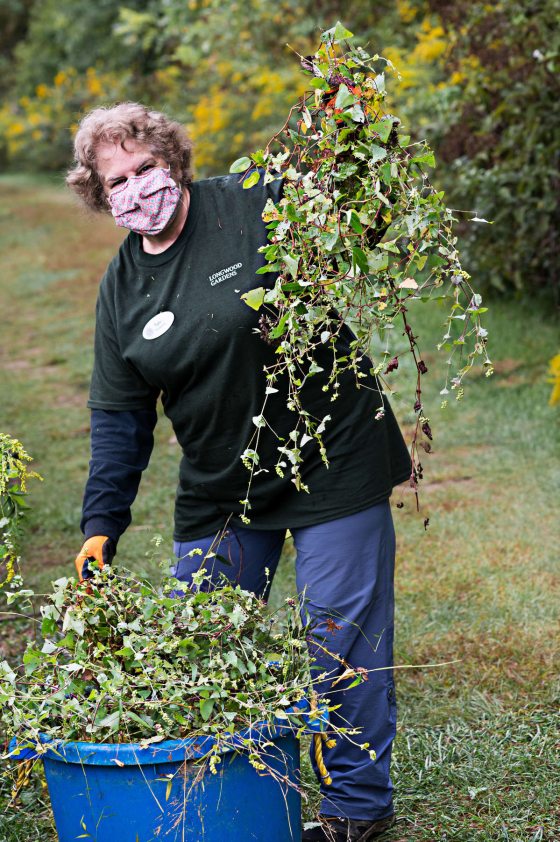
Members of the Land Stewardship Ecology team spend cold winter days planning the best timing and techniques to remove these plants before they take over with minimum impact on other plants and the environment. We work with volunteers and students to manage these species throughout the growing season. Volunteers who track the timing of blooms in the Meadow Garden provide useful indicators of the best times for action to encourage seed production in some species while preventing it for others. Knowing where and when to manage specific plants in our meadows requires keeping a close eye on about 350 acres of meadows and fields, so our Land Stewardship Ecology Technicians are also keen observers.
Each spring when last year’s leaves are dry and the wind is just right, a professional team of Longwood staff, hired experts, and colleagues from other organizations in our region assemble to carefully apply fire to select meadows. This is quite an orchestrated ballet. Each meadow is burned only once every few years, giving time for plants to establish but not enough time for trees to take hold.
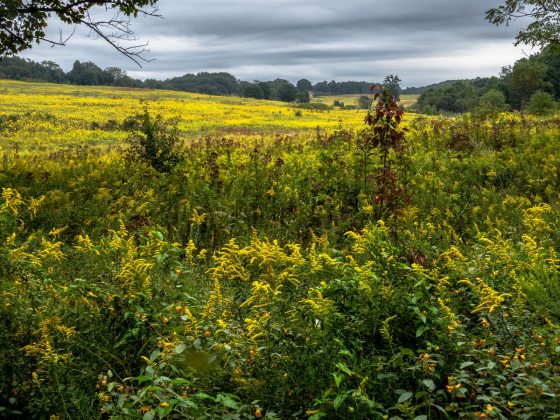
If you look closely at the Meadow Garden in summer, fall, or winter, you may be able to make out the boundaries between areas that have been recently burned, which have few shrubby woody plants, and those that may be next to burn to keep trees from winning the race toward the sun. Renewed by fire and tended for biodiversity, our meadows offer a changing feast throughout the year, feeding both wildlife and those who enjoy its parade of blooms and vast sweeps of color and light.
